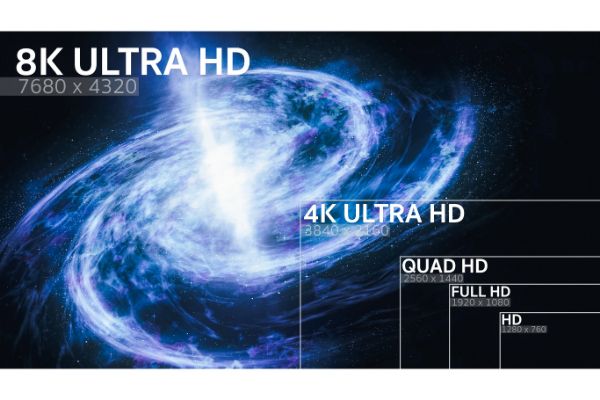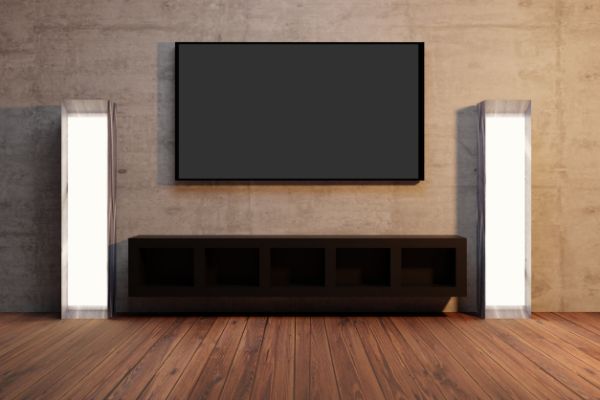Disclaimer: This post may contain affiliate links, meaning we get a small commission if you make a purchase through our links, at no cost to you. For more information, please visit our Disclaimer Page.
FHD image seems sharper and more detailed at higher resolutions; hence, the resolution is better than HD+. FHD refers to a resolution of 1920 x 1080, which is higher quality than HD (typically 1366×768). HD+ is 1600×900, which falls between Full HD and HD.
Table of Contents
Are FHD and HD the same?
Simply put, the term “HD” refers to a resolution of 1280×720 pixels or above. As long as the pixel remains at this measurement, you can find HD displays on screens of any size.
While standard HD provides 1280×720 pixels in resolution, FHD displays about 1920×1080 pixels as standard resolution. The two terms are often used interchangeably; however, HD and FHD are two different resolutions. Full HD is the next step up in resolution and is now the standard for most display devices.
Although, people who watch television at home may not even notice the difference in image resolution. Even if you have a high-definition television, you can’t always expect to see everything at its native resolution. However, this is not a scam as it’s not the fault of your TV manufacturer, but it’s the program you’re seeing.
Even with an HD television, you can get an SD display if the channel you’re watching is showing SD programming. This usually happens when your cable provider, TV network, or other sources of information send signals in lower resolutions. People still choose HD TVs over 4k UHD models because of this.
UHD, 4k, and 8k resolutions are more commonly employed in theatres and larger monitors because they have very high resolutions. However, while TVs with such high resolution are now available, they are affordable for home usage and cannot handle today’s widespread use.
Is HD+ Better than FHD?
Technically, HD+ is a lower resolution with about 1600×900 compared to FHD’s 1920 x 1080 resolution. In this stance, HD+ is not better than FHD, as it displays visuals in a lower resolution.
However, the human eyes can only see so much detail at such a short distance. Several variables can affect visual perception, such as screen size and viewing distance.
For example, HD resolution on a smartphone with a 5-inch screen covers you no matter how close you hold the device. A switch from HD+ to FHD on bigger 6- and 7-inch devices makes no difference at the same viewing distance. But why is this?
There are 1920 pixels in a vertical direction for FHD resolution. HD+ screens, on the other hand, have fewer pixels on the vertical axis than FHD screens. With 400 pixels per inch, there’s no difference between a 5.5-inch screen with HD+ and a 6-inch screen with FHD.
This is because the ratio of the screen gets taller to keep the pixel density at the same level. An HD+ screen can look the same as a larger FHD, even though a higher resolution is always better. The price of the gadgets goes up when the resolution is increased.
What Is The Difference Between HD+ and FHD+?
This confusion arises from the use of HD as a synonym for ‘Full HD’ when describing a product’s image resolution.
The actual number of pixels is the primary distinction between HD+ and Full HD+ Resolution. FHD+ is 2220×1080 pixels. 900p refers to the HD+ (HD Plus) resolution of 1600 900 pixels in a 16:9 aspect ratio.
At 921,600 pixels, this is the lowest image resolution that the industry may deem high definition. On the other hand, Full HD resolution refers to images with a resolution of 1080 pixels wide by 1080 pixels high. Approximately 2 million pixels are generated as a result of this arrangement.
Most television sets over 32″ are FHD, and most computer screens are at least FHD. A television or monitor/laptop/PC referred to as HD+ only has an image resolution of 900p. HD+ screens are no longer trending.
Another difference is the aspect ratio. HD+ screens are 16:9 while FHD+ screens are 16:10. FHD+ screens are wider than HD+, which makes them easier to view from the side.
An FHD+ screen can display the whole screen without any black bars. So if you’re holding it near your face, you’ll see everything perfectly. However, if you move away from your face, some screen parts might appear cut off.
However, the HD+ screen can show lots of details and some black space around each part of the screen. So you won’t notice anything wrong if you hold your phone close to your face. But, if you move away, you’ll see the edges of the screen get cut off.
Although FHD+ display more pixels compared to HD+, you can only feel the difference based on these two factors:
1. How far you are seated from the TV
Suppose you observe this difference only when you get close to the screen. If this were implemented, the graphics and movies would be clearer, larger, and more enjoyable for the user. The higher your TV’s resolution, the closer you sit to it without losing picture quality.
2. The size of your TV
The number of pixels on all 1080p HDTVs is the same. This means that no matter how big your screens are, you’ll only be able to display 2,073,600 pixels.
The pixels in a 26-inch HDTV are smaller than those in a 55-inch HDTV. So if your video or content is only 1080p, a big screen TV isn’t necessarily the greatest option.
What Is The Difference Between FHD And UHD?
Toward the top end of the spectrum comes Ultra HD video (UHD or 4K). Even at 1080p, this is a sharper, more detailed image. Ultra HD resolution has yet to be widely embraced, though.
UHD stands for Ultra High Definition, and it typically refers to screens with a resolution of 3840×2160 pixels. A typical example of an FHD TV has a resolution of 1280×720 pixels.
UHD is a new standard for televisions and digital cameras. It is expected to replace HDTV technology within the next few years. Furthermore, it is anticipated that UHD will eventually become the most popular video format.
Currently, UHD is commonly used for professional camera systems and large-screen TVs. However, some manufacturers are already offering UHD products.
Note that not all UHD screens are considered 4k. In technical terms, “4K” refers to a horizontal resolution of 4000. As a result, Ultra HD TVs are not 4K televisions, but they are commonly referred to as such.
What Are The Benefits Of Having A Higher Resolution Screen?
There are several benefits to having a higher resolution screen. One of the major factors is that you get better-looking pictures and videos. The difference between an HD screen and a UHD screen is very noticeable.
For example, when watching movies or playing games, you’ll notice that everything appears crisper and more precise. You’ll see more details in photos and videos; this means that your photos and videos become more detailed. You’ll also read the text more quickly because the letters appear larger.
Another benefit is that you’ll be able to watch content from different sources without any problems. For instance, you can enjoy Netflix, Hulu Plus, YouTube, etc., without worrying whether they support UHD or not.
Sharp visuals are simply one benefit of high resolution; it also allows displaying more information at once. The greater the resolution, the more of your content you can see in its entirety without having to zoom in.
This means reducing the scrolling required when working with Excel files or browsing web material. In addition, less zooming makes it easier to work in Photoshop and other editing software.
The downside to having a higher resolution is that you need to pay more money for your monitor. However, most people prefer to spend their money on other things rather than buying a new computer monitor. Furthermore, you’ll need a powerful computer and data to playback these types of files.


